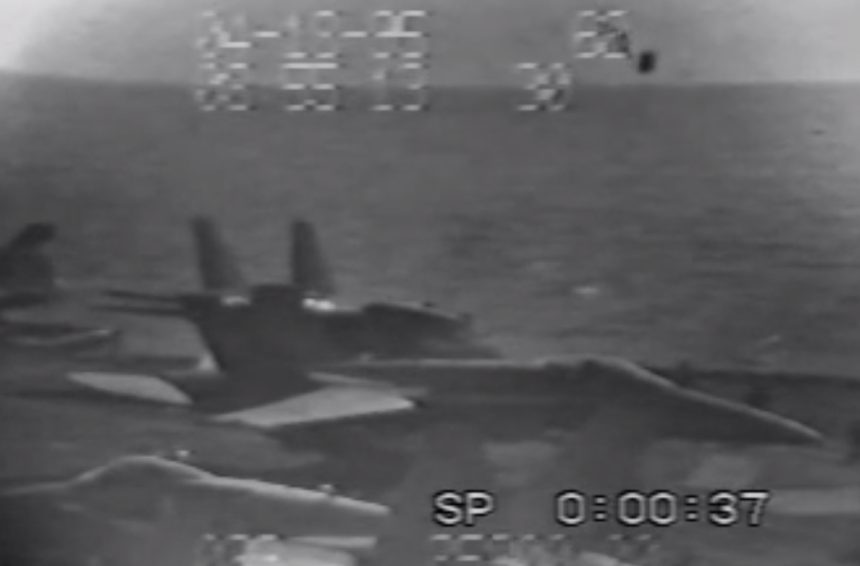This is why aircraft carriers have JBD (Jet Blast Deflectors).
The videos below show an incident that occurred aboard USS Independence (CV-62) in 1995.
On Apr. 18, 1995 a VF-21 F-14 Tomcat was blown off the flight deck of “Indy” by another Tomcat that was about to depart. Interestingly, the aircraft carrier did have the JBD (Jet Blast Deflector – normally raised behind the catapult as the exhaust from a departing jet does not hit and endanger flight deck crew or other aircraft) behind Cat. 4 but it couldn’t be used when launching an afterburning jet: Cat. 4 aboard Forrestal class aircraft carriers was not water cooled hence it couldn’t be used for launching an F-14 (it could be used for A-6s, A-7, E-2s or C-2s).
The Tomcat pilot and RIO (Radar Intercept Officer) successfully ejected from the F-14 whose nose wheel slipped into the port-se catwalk: they were recovered from the water within 2 minutes by two HS-14 SH-60F Seahawk helicopters. The Tomcat, leaning 60 feet over the ocean, was recovered too, after the fuel was removed from the aircraft.
From another angle:
This incident somehow reminds another one that occurred on Sept. 14, 1976, during a cruise off the Orkney Islands. On that day the Tomcat BuNo 159588 went out of control while taxiing and rolled off the deck of the USS John F. Kennedy and fell into the sea. The crew safely ejected before the Tomcat went over the edge. Unlike the USS Independence incident, in this case the plane ended up intact on the ocean floor. Since they were concerned that the Soviets might recover the Tomcat and learn valuable secrets (especially about the Phoenix missile), the U.S. Navy launched a recovery operation: the lost F-14 was recovered two months later.









